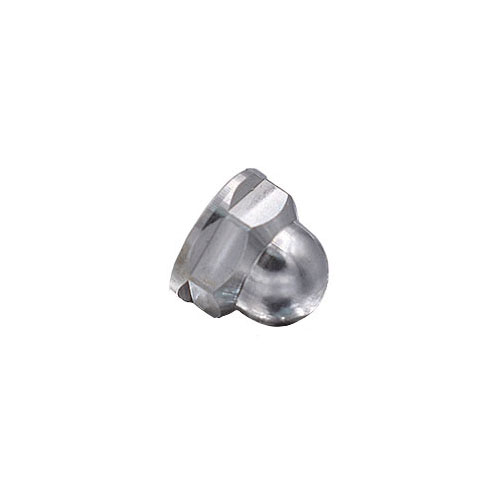
Cap nuts and acorn nuts are both types of nuts used in fastening applications, but they have distinct differences in appearance and functionality.

A cap nut, also known as a crown nut or domed nut, features a domed or rounded top that covers the exposed end of a bolt or screw when tightened.
It typically has a flat bottom surface that rests against the material being fastened.
Cap nuts are often used in decorative or finishing applications where aesthetics are important, as they provide a clean and finished look.
They may also be used in situations where the exposed end of the bolt needs protection from damage or injury due to sharp edges.
Cap nuts are available in various materials such as steel, stainless steel, brass, and plastic.

An acorn nut, also called a crown hex nut or blind nut, resembles an acorn in shape, with a domed top and a conical base.
Unlike cap nuts, acorn nuts have internal threads that allow them to be screwed onto bolts or threaded rods.
The conical base of the acorn nut provides a smooth transition from the threaded portion to the dome, offering a streamlined appearance.
Acorn nuts are primarily used for safety purposes to cover exposed bolt ends, preventing accidental contact that could cause injury or damage.
They are commonly employed in applications where a finished appearance is desired, such as in furniture assembly or automotive components.
Acorn nuts are available in various materials and thread sizes to accommodate different fastening needs.
In summary, while both cap nuts and acorn nuts have domed tops, cap nuts have a flat bottom surface and are used for covering the ends of bolts or screws, whereas acorn nuts have internal threads and are used for fastening onto bolts or threaded rods while providing a finished appearance and safety protection.
